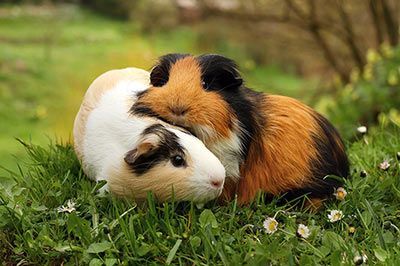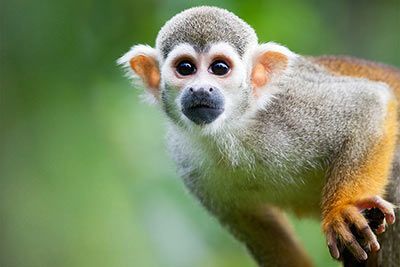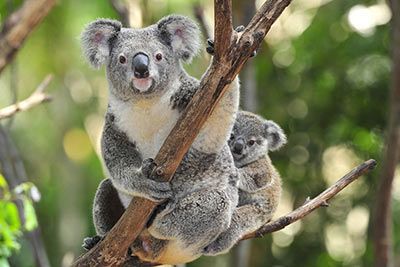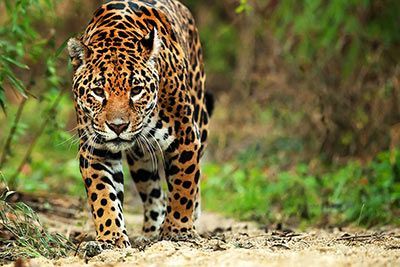Tasmanian Devil
Tasmanian Devil Facts
| Size | 22.4-25.5 inch (57-65 cm) |
| Speed | Up to 15 mph (24 km/h) |
| Weight | 13-18 lb (6-8 kg) |
| Lifespan | 5-8 years |
| Food | Mice, rats, rabbits |
| Predators | Snakes, wild dogs |
| Predators | Birds |
| Habitat | Tasmania (Australia) |
| Order | Dasyuromorphia |
| Family | Dasyuridae |
| Scientific name | Sarcophilus harrisii |
| Characteristics | Very curious, aggressive marsupial |
Main Characteristics
Do you know the Tazmanian Devil from the cartoon series? It really exists! It is one of the most unusual mammals on the Australian island Tasmania.
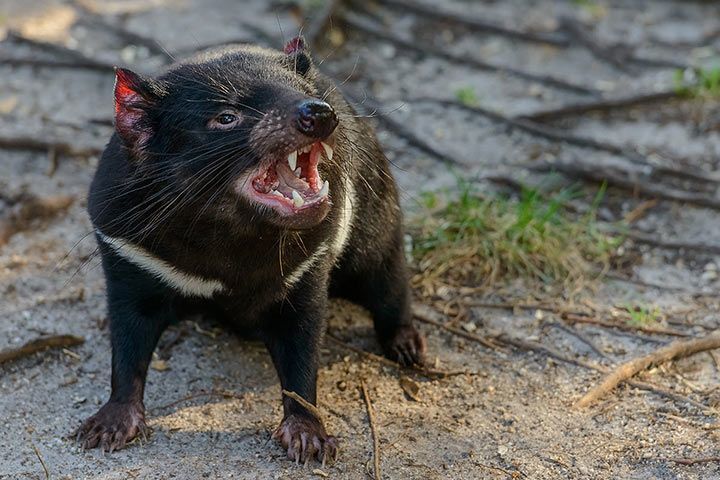
Where Does the Name Come From?
When European settlers first came to Tasmania, they heard a scary hissing noise in a clump of shrubs. It came from a Tasmanian devil looking for food. This alone was rather frightening. When the little marsupial mice find a carcass and devour it with other devils they utter reedy, screeching sounds. This really may give you the shivers and it inevitably makes you think of the devil, doesn't it?
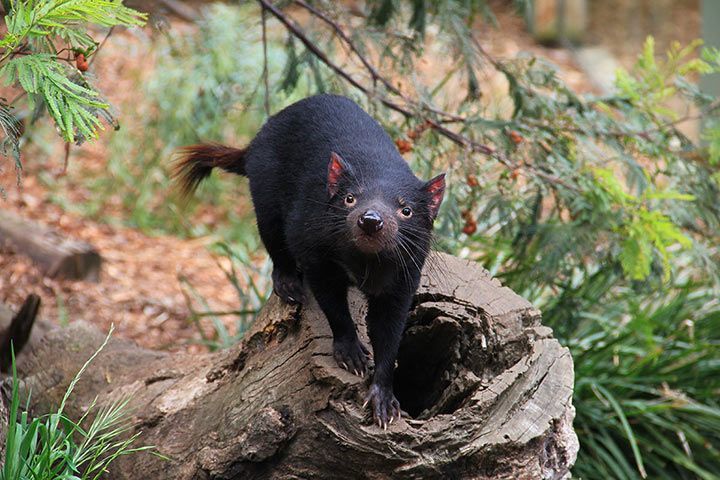
Importance For the Ecosystem
Tasmanian Devils Are the Vacuum Cleaners of the Forest
Tasmanian devils cover long distances every night to gather food – sometimes up to 10 miles (16 km). As scavengers they eat practically everything they can find, including bones. No matter how old and rotten, Tasmanian devils eat it and thus keep the forest clean. This is why they are sometimes called the “vacuum cleaners” of the forest. They also hunt living prey such as small mammals and birds.
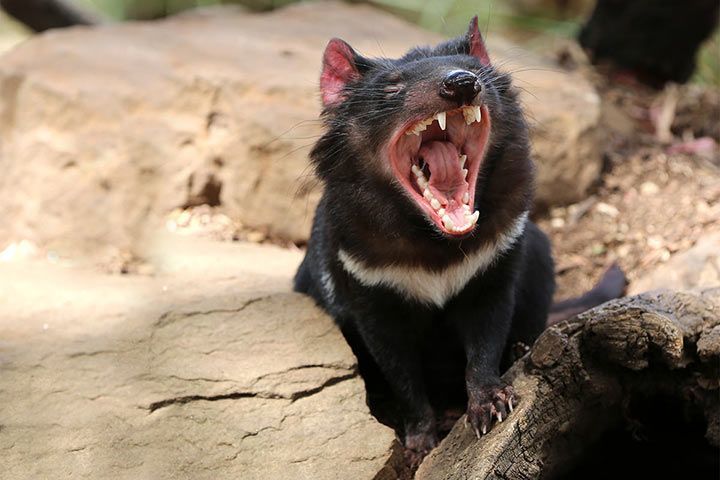
Behavior
When Tasmian Devils Feel Threatened
If a Tasmanian devil opens its mouth widely, it is scared and feels insecure. It also produces a musty smell when under stress.
How Do Tasmian Devils Fight Off Rivals?
If you see two Tasmanian devils sneeze, this does not mean they both are having a cold. Sneezing is a kind of bluff rivalling male devils use in fights for domination. During the fight their ears also go red.
Enemies and Threats
Tasmanian devils are the biggest carnivores in Tasmania and hardly have any enemies. They die in fights with local dogs, in car accidents, from diseases or the loss of their habitat.
Tasmanian Devils Are About to Become Extinct
In former times the Tasmanian devil was seen as a vermin and hunted like the Tasmanian tiger (the last Tasmanian tiger died in 1936). Fortunately, Tasmanian devils have been protected by law since 1941 and thus had the chance to breed again. In addition, farmers have learned to appreciate the devils because the little carnivores kill mice.
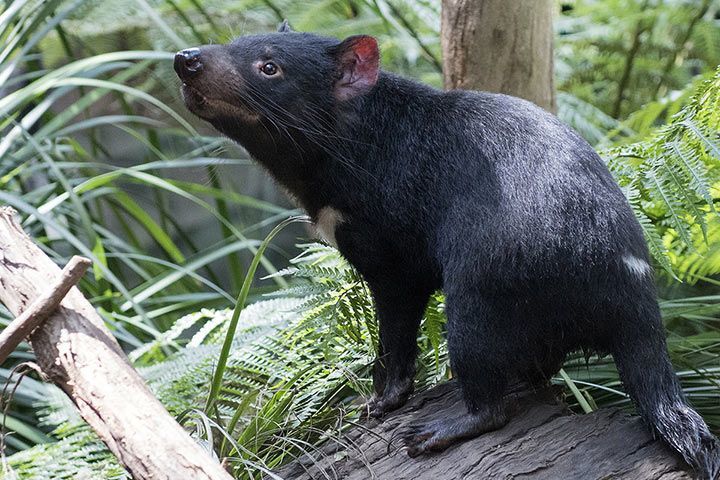
Reproduction
Tasmanian Devil Babies
Tasmanian Devils are marsupials and carry their kids around in their pouches for about four months, before they are able to live on their own. But till then, things are really complicated: The female devil gives birth to 20 – 30 babies at once. Then the young devils have to take part in a race from the birth canal to the teats in the pouch of their mother.
There are only four teats, which means that only four babies will survive. As soon as the babies are big enough, they take a ride on the back of their mother or cling to her tummy like koalas. After six months the youngs leave their mother. If they manage to survive the first year, devils can become 7 or 8 years old in the wild.
The Tasmanian Devil Is Related To:
- Quoll
Animals in the Same Biome:
- Watch Now on animalfunfacts.net:
 The Strongest Animals in the World
The Strongest Animals in the World














